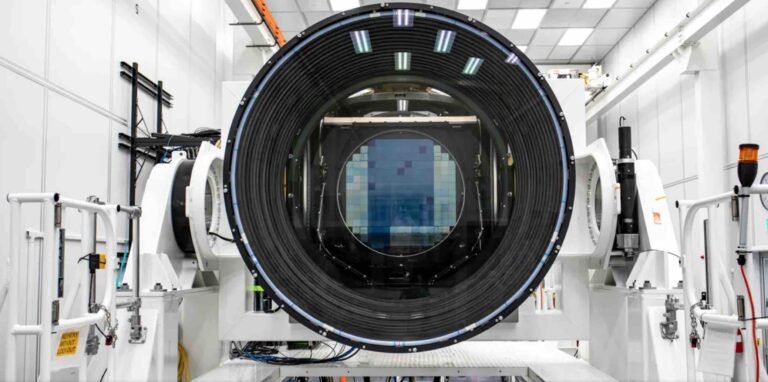The morning weather forecast in Boston called for rain. Fortunately, the rain did not start early, so I remained dry while jogging for an hour before sunrise. Later the same day, I left home for Logan airport in Boston, on my way to meet the NASA Study Committee on Unidentified Aerial Phenomena (UAP) in Washington, DC.
I was invited to Washington because, over the past five years, I have been intrigued by the unusual properties of the first three interstellar objects ever identified by humans. The first two of these I discovered with my student, Amir Siraj; these are a pair of interstellar meteors, IM1 and IM2 (documented by the US government in January 2014 and March 2017), which are rarer than one part in ten thousand in their material strength relative to solar system meteors.
The third was the near-Earth object, `Oumuamua, which had a thin flat shape and was pushed away from the Sun without showing a cometary tail. My plan was to describe the Galileo Project, which aims to figure out the nature of unusual interstellar objects as well as UAP, allowing for the possibility that they were manufactured by extraterrestrial technological civilizations.
The entire collection of unusual objects represents a mixed bag. If only one of the objects ever ends up being confirmed to be of extraterrestrial technological origin, it still would not necessarily indicate that the numerous reports of UAP represent anything extraterrestrial. This huge body of reports could indeed have mundane explanations, ranging from human-made craft or technologies to natural objects. The key to identifying an unusual signal lies in the data quality that makes it an outlier relative to the noise from familiar occurrences in the same environment.
This was the case in the astronomical data on the first three interstellar objects. But it is not necessarily the case in many UAP reports, including a recent one from Ukraine, which I discussed in a recent paper. The NASA Study will examine unclassified data on UAP in an attempt to separate the signal from the noise and advise NASA whether to fund future UAP research, such as the scientific program already pursued by the Galileo Project. The instruments designed by the Galileo Project more than a year ago are now collecting new high-quality data.


As the airplane was ready to lift off, the stewardess asked me to store my laptop in the overhead bin, so I had no choice but to close my eyes and think. I reasoned to myself that in order to improve the UAP signal quality, we need new data. Within a year, the Vera C. Rubin Observatory in Chile will survey the entire southern sky every four days with its 3.2 billion-pixel camera (a thousand times more pixels than offered by a cell phone camera). Its Legacy Survey of Space and Time (LSST) is likely to discover many new interstellar objects. But exactly how many?
In my head, I calculated that the discovery rate of IM1 and IM2 in the CNEOS catalog imply that meter-size interstellar objects collide with Earth roughly once per decade. `Oumuamua was a hundred times bigger than these objects and was discovered through its reflection of sunlight by the smaller Pan-STARRS telescope at a distance that is 6,000 Earth radii. This implies that a meter-size object would be detectable by LSST out to a distance of 60 Earth radii, the Earth-Moon separation. The cross-sectional area of that “fishing net” is a few thousand times bigger than the area offered by the Earth’s atmosphere – which is our standard meteor detector. This implies that LSST would detect a new meter-size interstellar object every week out to the distance of the Moon because LSST scans half of the full sky every four days.
If most meter-size interstellar objects are CubeSats sent by extraterrestrial civilizations to probe Earth, we could find one of them every week with LSST. As a result, our lack of knowledge regarding the nature and potential origin of unusual interstellar objects like IM1 and IM2 may change dramatically in the coming years. The dust raised by skeptics will settle down, and experts who studied rocks from the Solar system may be forced to admit that some interstellar objects are unusual.
As soon as the airplane lifted off, the rain started pouring. Last night I was informed during an interview on NewsNationabout new UAP reports by civilians or pilots. The steady pounding of fresh raindrops on the airplane windows reminded me of these fresh reports.
By the time my laptop was available for me to type this essay, I was done with the numbers in my head. I mentioned the “on the fly” results at the beginning of my presentation to the NASA Study. The committee members, including the astronaut Scott Kelley, asked excellent questions. We agreed that we all look forward to an exciting future ahead, guided by high-quality scientific evidence.
By the time I returned to Boston, the rain subsided, and the sky was overcast with clouds. Perhaps the clouds of uncertainty that currently overcast the nature of UAP will soon disappear, so that we will understand what may exist in our skies. With some luck, maybe this can be done with help from our new 3.2 billion-pixel camera, which every week will be able to aid us in the search for meter-size “packages” that might be delivered to Earth from regions of interstellar space.
Avi Loeb is the head of the Galileo Project, founding director of Harvard University’s – Black Hole Initiative, director of the Institute for Theory and Computation at the Harvard-Smithsonian Center for Astrophysics, and the former chair of the astronomy department at Harvard University (2011-2020). He chairs the advisory board for the Breakthrough Starshot project, and is a former member of the President’s Council of Advisors onScience and Technology and a former chair of the Board on Physics and Astronomy of the National Academies. He is the bestselling author of “Extraterrestrial: The First Sign of Intelligent Life Beyond Earth” and a co-author of the textbook “Life in the Cosmos”, both published in 2021.

